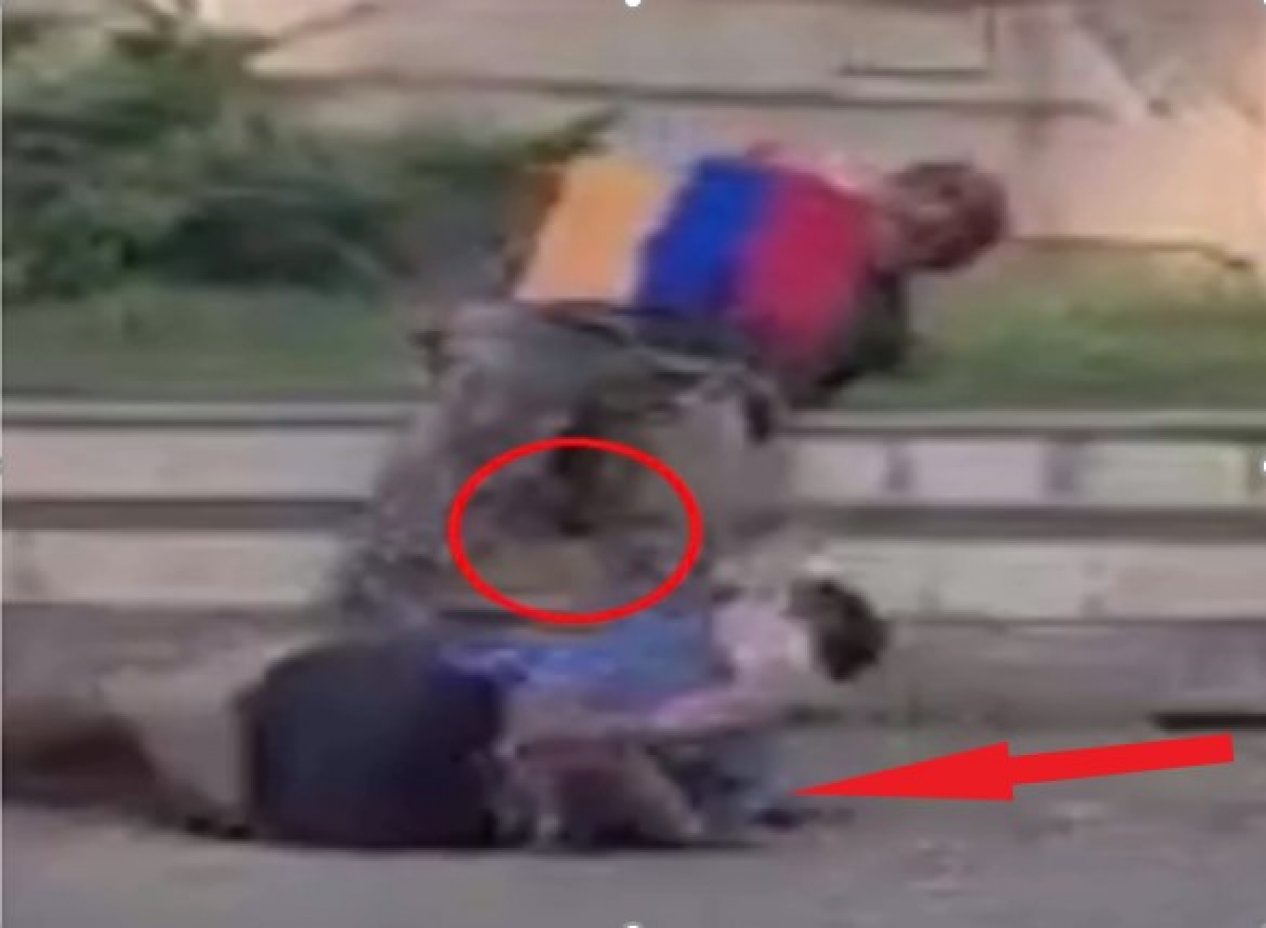
A video of the execution of two civilians in the liberated Azerbaijani settlement of Hadrut was spread on social networks on October 15 last year. The video was presented by Armenians as “Azerbaijan’s next war crime.” On the same day, Bellingcat, a popular fact-finding website, published a lengthy analysis, followed by a BBC article co-authored by Grigor Atanesian and Benjamin Strick, citing Bellingcat, entitled “Nagorno-Karabakh conflict: 'Execution' video prompts war crime probe.”
Interestingly, the original source of the video is unknown. However, all retweets and Facebook shares were made exclusively by Armenian authors. In particular, reference was made to the Facebook user TigranAvakian. Currently, the page doesn’t exist, and after the end of the war, the page was closed.
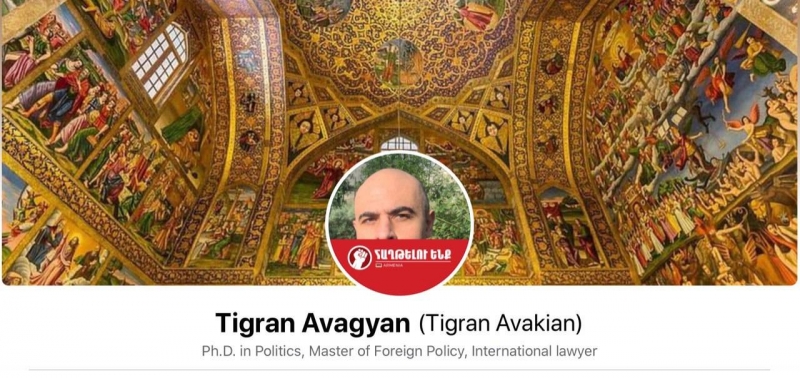
Faktyoxla Lab. has investigated the video of the shooting of civilians in Hadrut.
Faktyoxla Lab. conducted this research on the basis of the verification of the arguments put forward by Grigor Atanesian and Benjamin Strick, as well as other factual and technological tools.
Interestingly, Bellingcat posted an article about the incident on the same day, October 15, authored by Nick Waters. The author writes that they conducted an investigation and didn’t see any fraud in the video. Even a Bellingcat expert found that helmets and weapons belong only to Azerbaijani soldiers. Can you imagine? The war has been going on for 20 days, and both sides had a sufficient number of dead soldiers. It is very easy to get their weapons and clothes. It is very strange that such a popular website has conducted serious research and made hastily conclusions. Maybe one of the employees of the website is the author of a biased approach. Who? We present only some of the journalists working at the famous Bellingcat website, and let the reader and experts decide themselves.
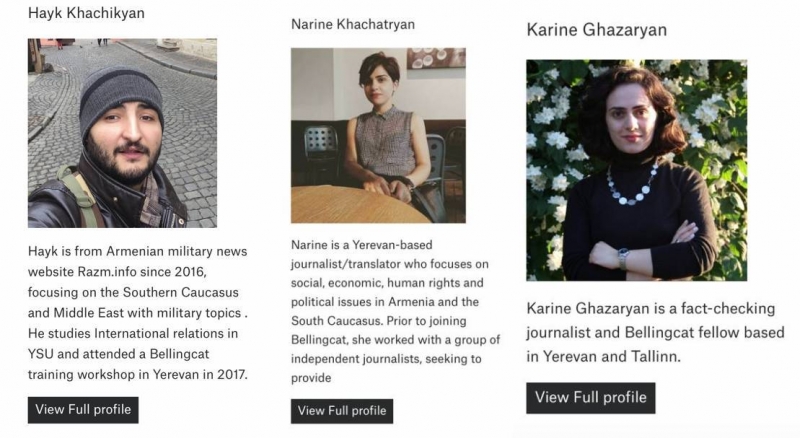
We don’t want to talk about it anymore. Let’s move on to research.
First, let’s do a general analysis of the video.
The video shows Azerbaijani-speaking servicemen capturing two Armenian soldiers, one civilian and the other military, and then demonstratively shooting them in one of the parks. Indeed, the person who made the video speaks Azerbaijani, and the footage shows the military detaining two Armenian captives and shooting them in front of a park.
This is the first conclusion that an ordinary viewer has seen in the video. But we, Azerbaijanis, can determine who speaks our language with an accent, dialect, and according to these signs, define from which region of Azerbaijan this person is. And, of course, this situation can be found in other nations as well. For this reason, we say with confidence that this conversation, this accent is that of the Armenians who once lived in Azerbaijan. To accept this, it is enough to listen to Alexei Manvelyan, a Yerevan correspondent for the BBC’s Azerbaijan bureau in Armenia, who once lived in Ganja.
Secondly, other servicemen there do not speak Azerbaijani at all, and sometimes make certain emotional noises. That’s because they don’t know the language fluently.
Third, according to the objects in the videos, the authors determined that the shooting was recorded in the coordinates 39.524118, 47.027827. Although we know that the argument "we have come to this conclusion based on the research of several people" is alien to professional journalism, we agree that these coordinates refer to the 30-year-old settlement of Hadrut in Nagorno-Karabakh, Khojavend region of Azerbaijan.
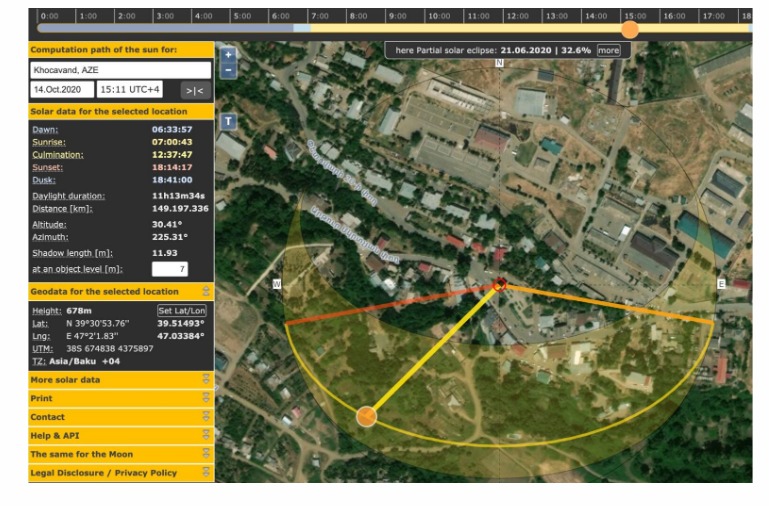
Attention here. Although the Azerbaijani side announced the liberation of Hadrut on October 9, it became clear that heavy fighting took place there for several days and the settlement passed from hand to hand several times. Even the head of the Wargonzo website, a project of the Armenian oligarch, prepared a report from there on October 13, and Armenian Interior Ministry spokespersons Shushan Stepanyan and Artsrun Hovhannisyan repeatedly stated that Hadrut was in their hands. That is, if we believe the Armenian sources, it was virtually impossible to say that the settlement was fully controlled by the Azerbaijani Army until October 15.
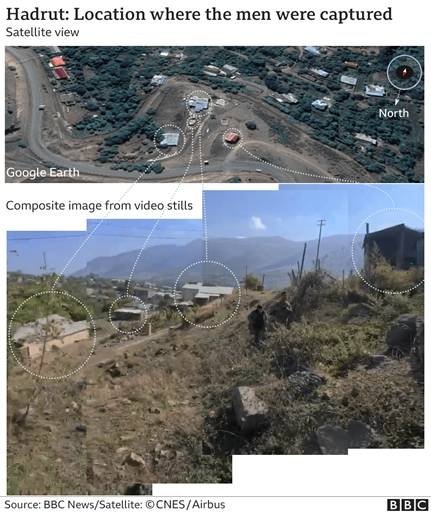
It is also clear from the screenshot that the BBC staff identified the scene by comparing the footage with Hadrut’s satellite image. Well, we don’t object. This is the northern part of the city. However, for some reason, the "execution scene" took place one kilometer from the southern entrance to the city (Mkrtchyan Street), which was under artillery and sniper fire by Armenians. We are currently presenting that map so that there are no unclear points left.
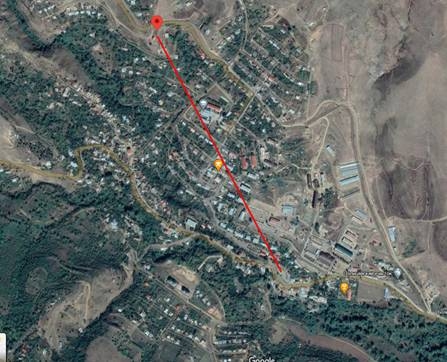
Now some questions arise. If the executioners are Azerbaijani soldiers, why should they take two "captives" and travel 4-5 km (shown in the red line in the screenshot - ed.) and execute them in a park? What is the point of going so far and endangering themselves? How do their benefit from it?

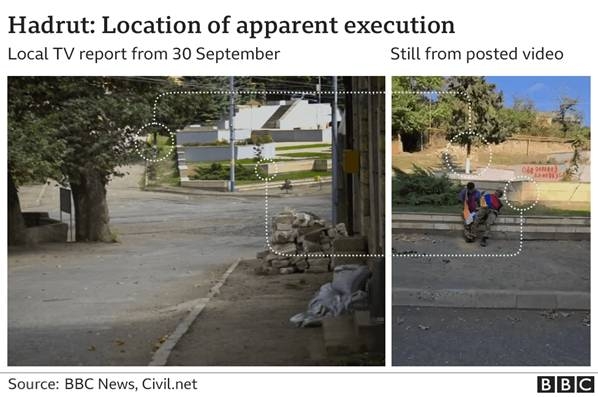
Specifying the time and location of video footage
The author determines that if we compare the statements made by the Azerbaijani side, Hadrut was under the control of the Azerbaijani side on October 9-15, and according to the size of the shadows, the video was shot on October 14.
According to a shadow analysis conducted by SunCalc, the execution time accounts for 14:00. Because there are no exact coordinates, the error can occur about 1 hour apart. That is why they claim that the incident took place at 15:11.
As a result of the "shadow analysis", the shooting took place on October 14, at 15:11. (according to a study by Nick Waters). Since the angle of the tree shadow is 45 degrees, the azimuth angle is 225 degrees, which indicates that the time on this resource is 15:11).
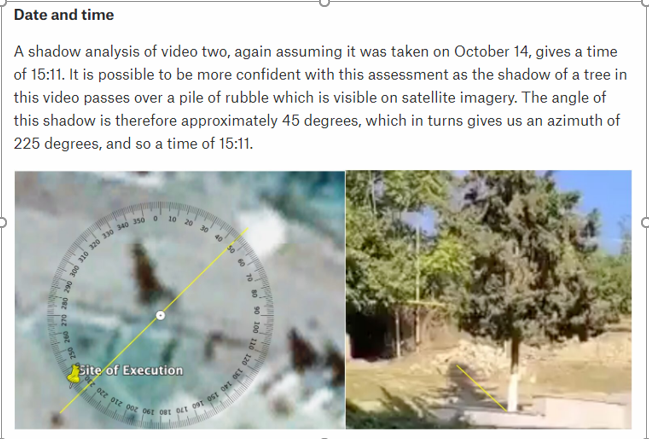

But the research’s author missed a point. In the first video, the shadow of a relatively old prisoner falls to the ground. It is unclear why this shadow is not commented on. A study of the shadow on the SunCalc website shows that when the short Armenian "captive" faces north (the camera is facing north), his shadow appears to the left of us, i.e. the sun falls to the right of us and to the left of the captive during the video recording.
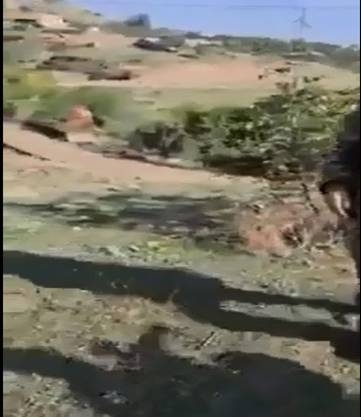
Measurements on the mentioned website show that the shots were taken not at 15:11 (because the length of the shadow is 1.76 meters here), but much later at about 16:10.

It turns out that this video was taken after the "execution"? So they brought the shot people and re-shot them somewhere in the north of the city?
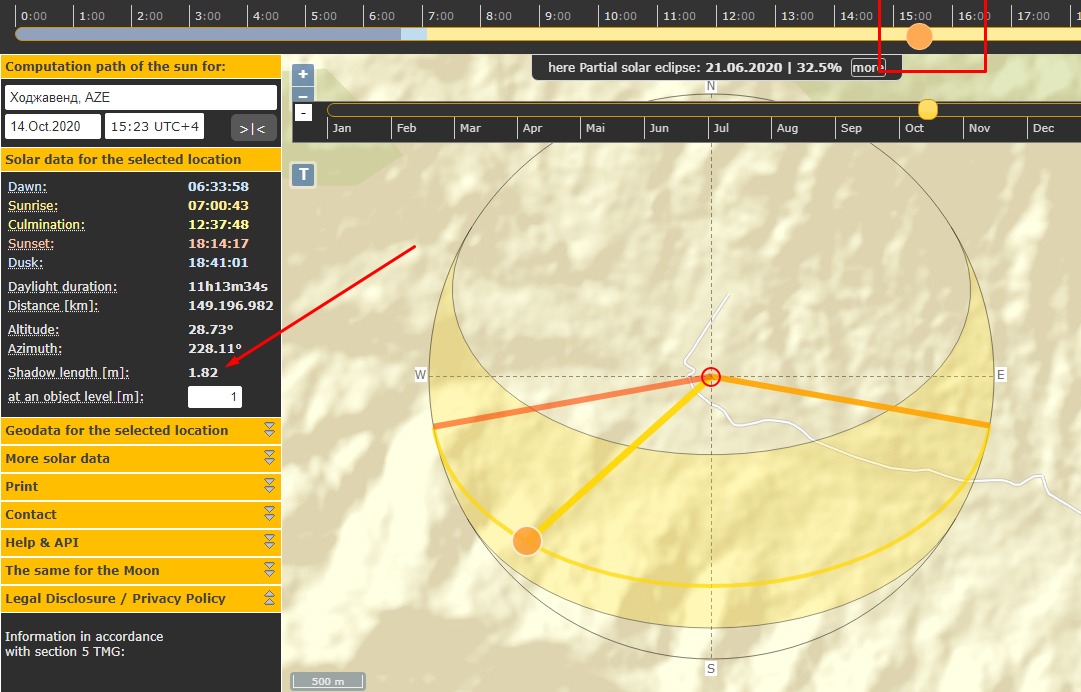
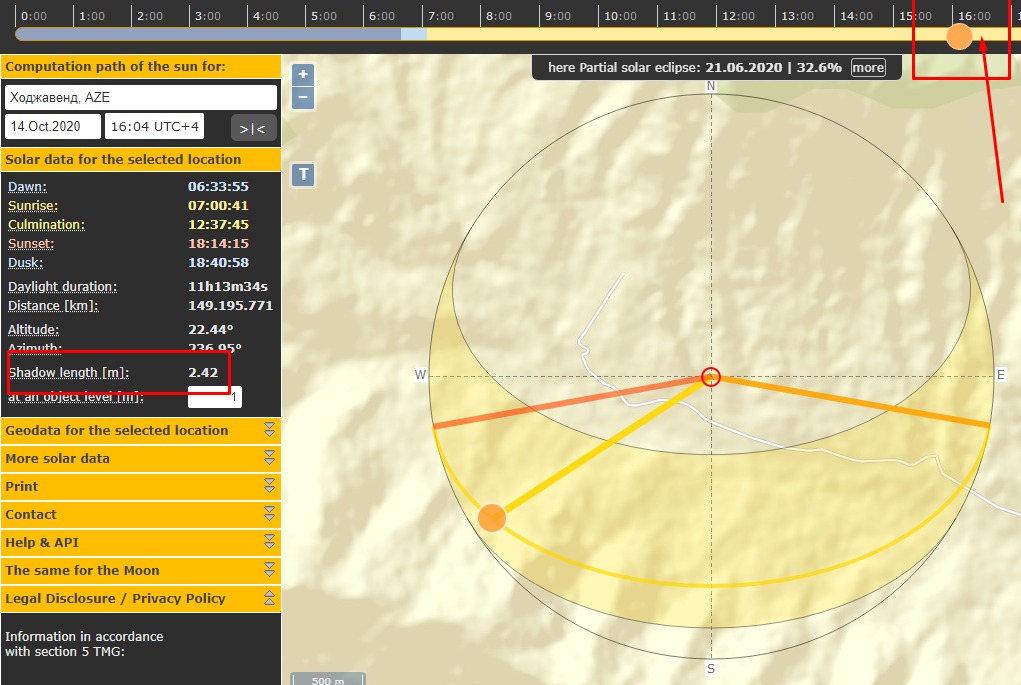
Let’s also note that if the filming was really taken on October 14, 2020, fortunately that day should have been the hottest day in October in Hadrut. Just follow this link.

Why did we mention this point? One of the captives was in a military winter uniform, when he was captured. Imagine the 29-degree hot, sunny weather in Karabakh and the soldier’s winter clothes. Why wear winter clothes in such hot weather? This means that the shots were not taken that day. These shots were recorded on October 8-9, when Hadrut was under the control of Armenian soldiers, well ahead of the time presented.
Let’s go back to the execution video.
The footage we present (in the park where the execution video was shot) shows an event broadcast on "local television" in August 2019.
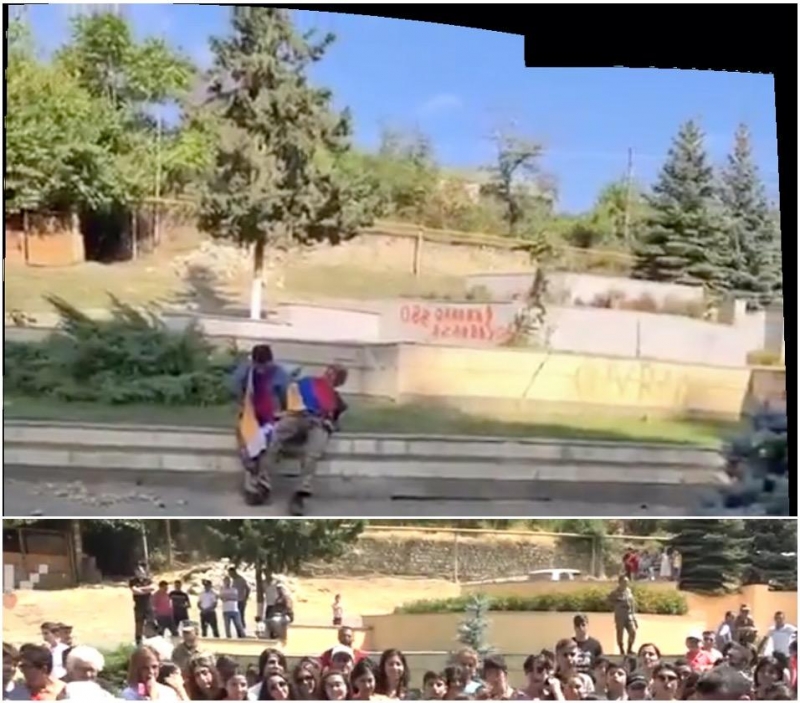
It seems to be the same place. What attracts attention here is the inscription "Karabakh is Azerbaijan" written on the back of the execution scene above. This point caught our attention, and when we examined those fragments in the video footage, we saw that this part was later edited into video. To understand this, it is enough to compare the different colors of the wall shown in the photo below with the part with the inscription at the top.

Putting aside the absurd idea that soldiers bring paint to the wall, find a flag and wrap the captives into flags, the phrase "GaraPag is AzerbayGan" contains huge mistakes of spelling. Only those who don’t know the Azerbaijani language could do this.
As for the execution scene itself... local and foreign film editors, with a little research, determined that the scene was fabricated. But we must say that no army or soldier in the world will execute a captive when he is sitting! This is a great stain on the name and dignity of the soldier. After these shots, it becomes clear why Armenian directors actually "execute" "prisoners" while they are sitting. (Video is provided). It turns out that the reason for the "captives" to sit so close was so that the old captive would be able to activate the smoke-generating device hidden behind him.
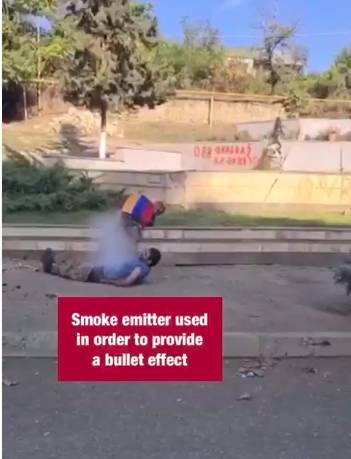
Another mistake. When looking closely at the shooting scene, it is clear that after the Azerbaijani commander’s order to "target the heads," the bullets hit different parts of the body, except for the head. How unprofessional should the Azerbaijani soldiers be to only shoot the wall, the body, and not the head? Why? After all, it is impossible to imitate a shot in the head. There should have been blood. However, not a drop of blood is visible in the footage.
Another point. At the shooting scene, we see that the bullet did not hit the asphalt or the sidewalk. There are no cracks in the tiles, no bullets piercing the ground.
People who have served in the military, those who watch movies, know that a person falls backwards from a shot by Kalashnikov assault rifle, not forward. In this scene, we see an old man falling on his face. Even the young soldier who falls first manages to put his left hand on the ground. This point is also one of the important nuances that prove the falsity. A person who is shot will never put his hand on the ground, his hand will fall to the ground. The soldier puts his hand as if lying on the ground.
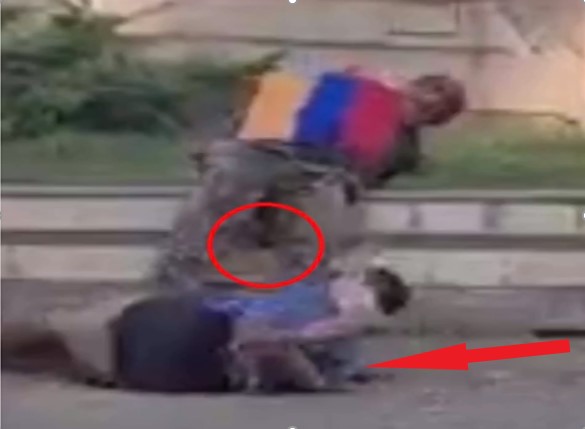
It should be noted that the video was first broadcast not by Azerbaijan, but by Armenians. Any heroic video is first spread by soldiers to their close friends and acquaintances. After all, this is a filming from a settlement that has been under occupation for years. But the video is being spread by Armenians. For what purpose? Do they want to say that "Hadrut was liberated by the Azerbaijani Army"?
On the other hand, why should Azerbaijanis who have committed such a crime document their crimes? How can you imagine such a scene? The soldiers have liberated the city, there is no electricity, no other utilities, and the soldiers commit this act and immediately send it to their friends? And on the same day, Bellingcat investigated it, came to a conclusion and announced that the crime had been committed.
War victims are usually blindfolded. But the execution with wrapping the captives into a flag is really very strange and ridiculous in terms of the scenario. It is as if the creators of this video want to show that if it is demonstrated somewhere in the future, it can be said, "These people are Armenians, and not from any other nation."
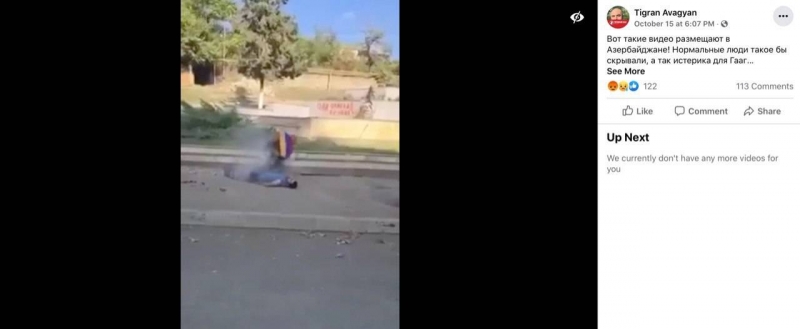
Conclusion. The video of the shooting of two Armenian soldiers during the liberation of Hadrut is based on a fake scenario.




















